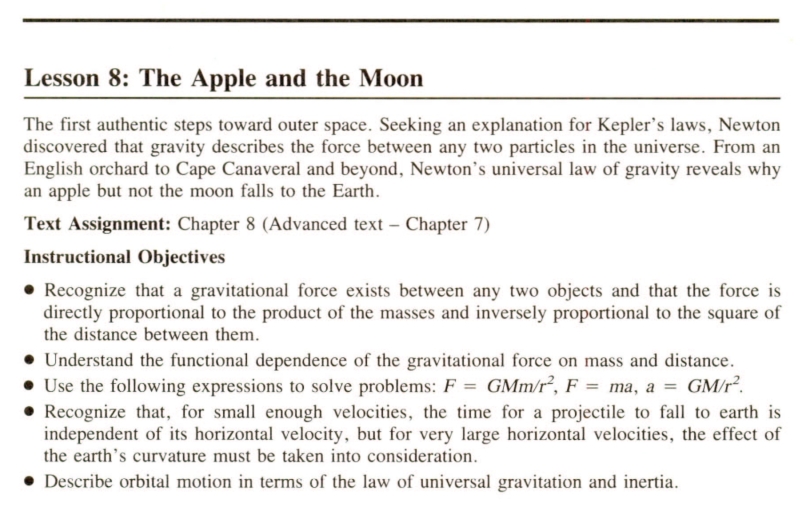
“The Apple and the Moon” is lesson eight in part one of “The Mechanical Universe. . .and Beyond .” You may come to Broida room 1630 to view this episode. The description from the accompanying manual follows.
You can view this individual episode here.
